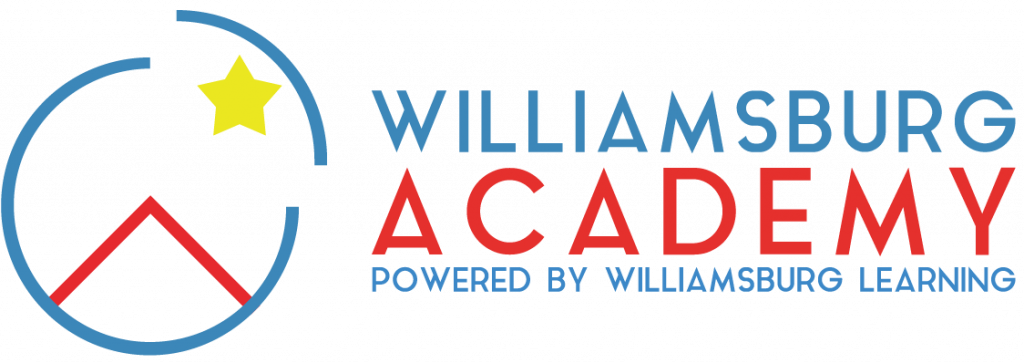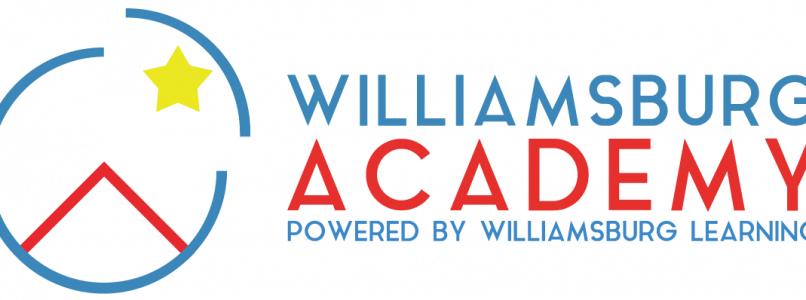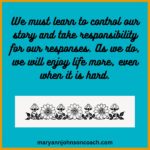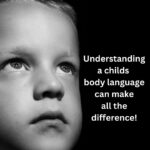 I learned two new words that relate to online schools, asynchronous and synchronous.
I learned two new words that relate to online schools, asynchronous and synchronous.
Asynchronous classes allow students to work without a live instructor via materials, lectures, tests, and assignments that have been provided. Synchronous online classes are when students and instructors are working together live.
The topic came up during a conversation I had with Adam Hailstone, CMO and Director of Leadership at Williamsburg (https://vimeo.com/195837948) I was asking him about the school because online schools are such a hot topic right now and I wanted to know more about how they work, the value to students and about Williamsburg in particular. I learned a lot!
I loved the fact that at Williamsburg https://www.williamsburgacademy.org/ they have mentors rather than teachers; the fact that students and mentors see each other and interact during class via a chat option; that they use a ‘smart whiteboard’ (this is sooo cool); they have students from all over the country and mentors from all over the world.
If you have been considering an online school for your middle school or high school age youth let me share what I learned About Williamsburg and it might help you make your decision.
Mentors rather than teachers
At Williamsburg, teachers are called ‘mentors’, because they do more than just dispense knowledge––they inspire, challenge, listen to and guide students as they learn how to learn. They help youth learn how to lead themselves and others.
Mentors spend a lot of in-class time with the youth. Students have access to mentors live in office hours, via email as well as in live classes. They can receive live feedback on assignments.
What intrigued me was that mentors, because they teach in a virtual classroom come from all over the world. Mentors at Williamsburg (https://vimeo.com/195837948) live in the USA, Europe, and many other countries. Last year they had a mentor from Nepal. How cool is that!
This idea of worldwide teachers is certainly 21st-century style learning. Because teachers are not locked into a geographical area the school can vet or head hunt from anywhere in the world. This makes it possible to have world-class mentors.
One last bit of information that I gleaned about mentors at Williamsburg, they are able to give students more one on one time than they might get in a brick and mortar building. That can mean the difference between doing OK and thriving for some youth.
What and How Youth Learn
Williamsburg (https://vimeo.com/195837948) focuses on teaching youth how to think not what to think. It is a liberal arts program coupled with a leadership program. The culture is not just academic but is larger in scope and includes helping young people determine how to live a meaningful life and how to reach their full potential.
One of the things that I considered a perk at Williamsburg was that kids can do most of what gets done in a brick and mortar school. They can talk live with their mentors and with the others in their class. They can get almost instant feedback.
Mentors create breakout rooms during live classes so that students can collaborate in small groups. They participate in group projects, peer presentations, student government, simulations, engaging videos and readings, challenging projects and assignments, and oral, written, and project-based assessments.
Williamsburg https://www.williamsburgacademy.org/ works to create a culture of thinking and problem solving through the wise use of mentors, dynamic classes, and in person social engagements which are designed to lead to a meaningful purpose.
Classes run 50 minutes but not all learning time is screen time. There are plenty of reading projects and all sorts of assignments to help kids learn to think and to accomplish.
There is a lot going on inside every virtual Williamsburg class and just in case your family has to be away every class is recorded. This gives individual families the flexibility they need.
What About The Social?
We all know that kids want to be with their peers so how does that work at Williamsburg? (https://vimeo.com/195837948) Socialization is part of a larger learning culture with punctuated social experiences rather than day to day socialization. They have what they call ‘in person’ social engagements.
A few times a year students gather live to learn, work, and interact with each other. This can be in the form of summer camp, conferences, travel adventures, etc. Recently students went to Germany to learn about WWII. This summer students will be going to Guatemala and this fall to Nepal. What a way to spend time with your peers!
The need for social interaction with peers is also satisfied as students work in teams and classes on projects on-line each year.
I was amazed to learn about a recent project that a group of 6th graders completed. They had heard of a charity that wanted to provide a school for a village in Bolivia. However, after some research, they realized that without a water pipeline kids wouldn’t be able to go to school. This was because children spent much of each day carrying water from a lake to their homes. There was no time for school.
The pipeline was going to cost $11,000. The sixth graders decided to raise $4000 of that cost. So they came up with a plan and put it into motion. They used what they were learning at school – creating a website, writing, e-commerce skills, working as a team, leading, reaching out for donations using rhetorical skills, and so forth.
When the project was finished they had raised $19,000 which paid for the pipeline and part of the school. These were sixth graders!
These kids really got to know each other. They spent real time and virtual time together. They learned that even young people can do powerful things across the world.







